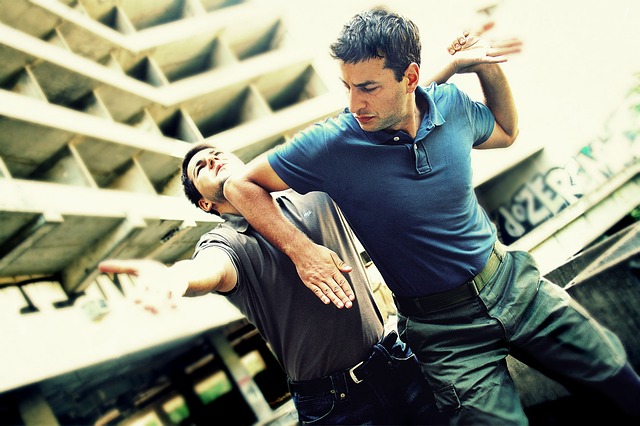The humane and forbearing traits, characteristic of the Indians, have been supplanted by the fiendish and Mephistophelian attributes in many people in the country. This is truly disconcerting. There is an urgent need to combat this social menace by ensuring that the majority of the population is equipped with the knowledge of self-defence.
The feeling of insecurity is as intense as is the atmosphere fraught with perils. The very thought of confronting a pervert sends shivers down one’s spine. The predators/assaulters are lurking in the homes, schools, colleges, workplaces, farms, fields, trains, railway/ bus stations, hospitals, prayer halls and on the streets. Toddlers, young girls and boys, older men and women are all vulnerable to these devils whose monstrosity knows no bounds. Young boys are sodomised and bullied and girls are sexually victimised in educational institutions while other men and women are subject to gang attacks and brutalisation too. The offenders include close relatives, friends, religious preachers, doctors, teachers, non-teaching staff, employers, officials, politicians and domestic workers, cutting across all socio-economic classes.
The incessant reports in newspapers, magazines, on the web and Television News Channels alongside the T.V.Serials’real life episodes, all bear testimony to the increase in danger of attack and molestation.
Self preservation is a powerful motivator in an encounter with one or more attackers.
In the words of Ronald Reagan “Self-defence is not only our right, it is our duty”.
“Self-Defence is a counter-measure that involves defending the health and well being of oneself from harm. The use of the right of self-defence as a legal justification for the use of force in times of danger is available in many jurisdictions.” Basics in Self-defence training involves both physical force and techniques to counter an immediate threat of violence and mental aspect of toughness, tenacity and preparedness to execute the techniques under duress. The knowledge of combat skills is essential for everyone to be able to fight for one’s survival/in self-defence without a weapon. Instruction in self-defence is usually customised to suit the participants’ lifestyles, occupations, age groups, gender, mental and physical capabilities.
Many forms of martial arts are practiced for self-defence. “Martial arts are codified systems and traditions of combat practiced for a number of reasons—self-defense, military and law enforcement applications, mental and spiritual development and the preservation of a nation’s intangible cultural heritage.”
Indian history is rich with martial arts, some of which were also traditional games, such as Kalarippayattu, Silambam, Gatka, MastiYuddha, Thang Ta (Huyen Langlon), Lathi, Mardani Khel, Pari-Khanda, Kathi Samu, Thoda and Varma Kalai.
The martial arts commonly practiced universally are: Kickboxing, Brazilian Jiu-Jitsu, Muay Thai, Krav Maga, Taekwondo, Karate, Boxing, Wing Chun Kung Fu, Aikido, Jeet Kune Do, Judo, Keysi, Samba, Sumo Wrestling, Hapkido, Capoeira, Savate.
Owing to their vulnerability, boys should also undergo self defence training. Similarly, all ladies and men, in all professions and occupations ought to be educated in self-defence. However, the age from when the instruction can be imparted has to be fixed considering the physical stamina of the trainee and the mental ability to grasp.
The Central Board of Secondary Education has directed all affiliated schools to embark upon a programme of self-defence education for girls. Many schools in Mumbai and other cities have already started self-defence classes for girls. According to reports, the Kolkata police in 2014 launched Sukanya, a self-defence training programme for all school and college students. The Delhi police also launched Parivartan in 2005.Both have gained popularity.
The benefits of training in combat skills are multi-fold:
A.) Physical fitness is boosted as the whole body is exercised and the entire muscular system is activated. The training results in strength, stamina, flexibility, movement coordination etc.
B.) Mental Health is enhanced by an increase in self-esteem and self-control.
C.) Emotional and Spiritual well being are therapeutic effects of martial arts learning.
Sections 96 and 97 of the Indian Penal Code are supportive of self-defence. It is officially reported that the common man when threatened can rise in self-defence. “If someone insults a woman or tries to kill a person, then the law empowers a common man to kill that person. If someone is insulting any mother and sister, if somebody tries to immolate a house or shop, or if someone tries to kill a person in front of you, then a common man has been empowered by the law to kill that person,” according to official sources. (this is not just the powers vested in the police) S.100 of the IPC also upholds that the criminal can be fatally attacked by the defendant in cases of kidnapping and wrongful confinement. Right to self-defence can be exercised in cases falling under the categories of theft, robbery, mischief and criminal trespass whether the movable or immovable property belongs to him or any other person.
The right to self-defence is subject to the restrictions contained in Section 99.
The Corporate Sector and NGOs and the State Governments and Local Bodies need to play an important role in effective implementation of self-defence training programmes-adopt a holistic approach towards trainers and trainees- and ensure that they do not remain a hogwash. Otherwise India will be reduced to a country of victims.The matter of self-defence for all is the battle-cry for a Formidable India.
 The author Jaya Chandrashekhar was an Income-tax Officer and recently quit after decades of service. She also compered for the Yuva Vani English, AIR for a short while. Jaya has a keen interest in socio-economic issues and contributes to the GOI Portal, Indian Express amongst several others. In her spare time, she enjoys yoga and cooking.
The author Jaya Chandrashekhar was an Income-tax Officer and recently quit after decades of service. She also compered for the Yuva Vani English, AIR for a short while. Jaya has a keen interest in socio-economic issues and contributes to the GOI Portal, Indian Express amongst several others. In her spare time, she enjoys yoga and cooking.
Views of the author are personal and do not necessarily represent the website’s views.
Thank you for reading the story until the very end. We appreciate the time you have given us. In addition, your thoughts and inputs will genuinely make a difference to us. Please do drop in a line and help us do better.
Regards,
The CSR Journal Team


